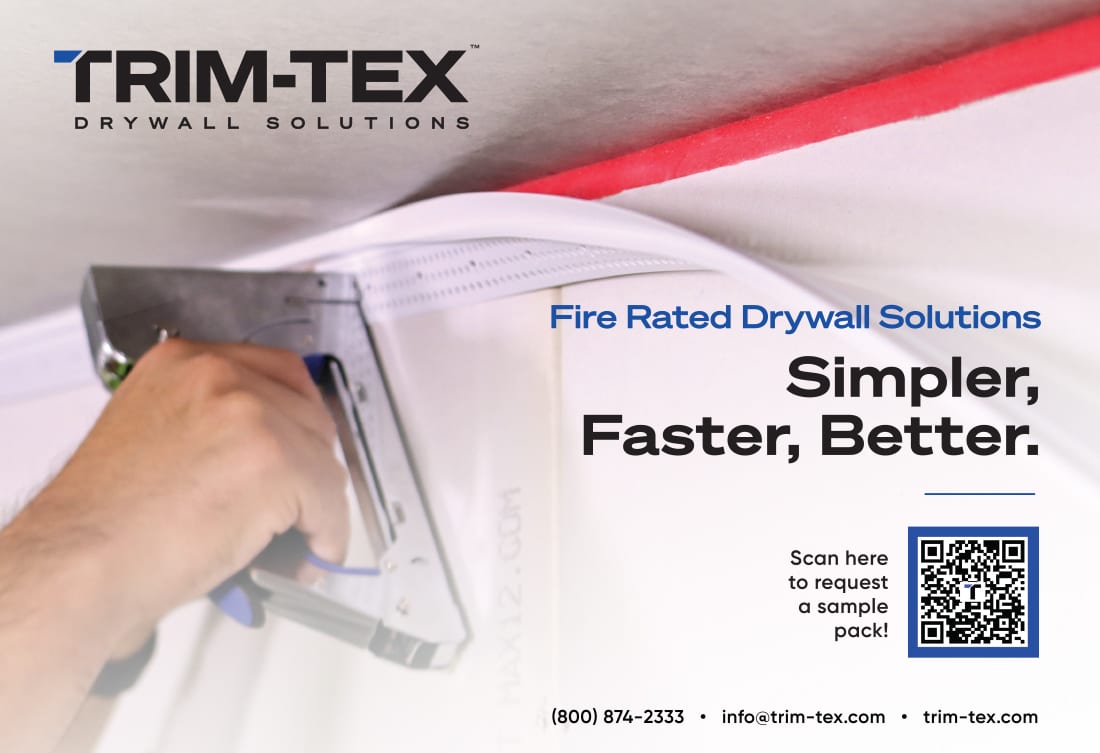Who says firestopping has to be ugly? By Don Pilz
High-Performance
Firestopping
Firestopping is an essential engineering measure often overlooked in building design, construction and maintenance. It’s required to seal perimeter building joints and through penetrations at fire-rated walls, floors, and ceilings to provide a barrier against the spread of fire, smoke and toxic gas.
No matter what industry you’re in, there’s no denying that aesthetics are part of the equation. From architecture to interior design, the importance of aesthetics is highly emphasized. Yet, that same aesthetic design can be overlooked when it comes to firestopping.
First-generation firestopping took a function-over-appearance approach. Functionally, the fire sealant prevented the passage of heat, flame and smoke. However, it was often unattractive while remaining highly visible.
It doesn’t have to be that way. By choosing the right product solution, builders and contractors can keep their projects aesthetically pleasing while still providing the highest levels of safety.
Several manufacturers have stepped up recently to offer more aesthetically pleasing firestopping, giving birth to a new category, pre-formed firestop. These unique solutions comply with life safety requirements while simultaneously meeting some of the aesthetic demands.
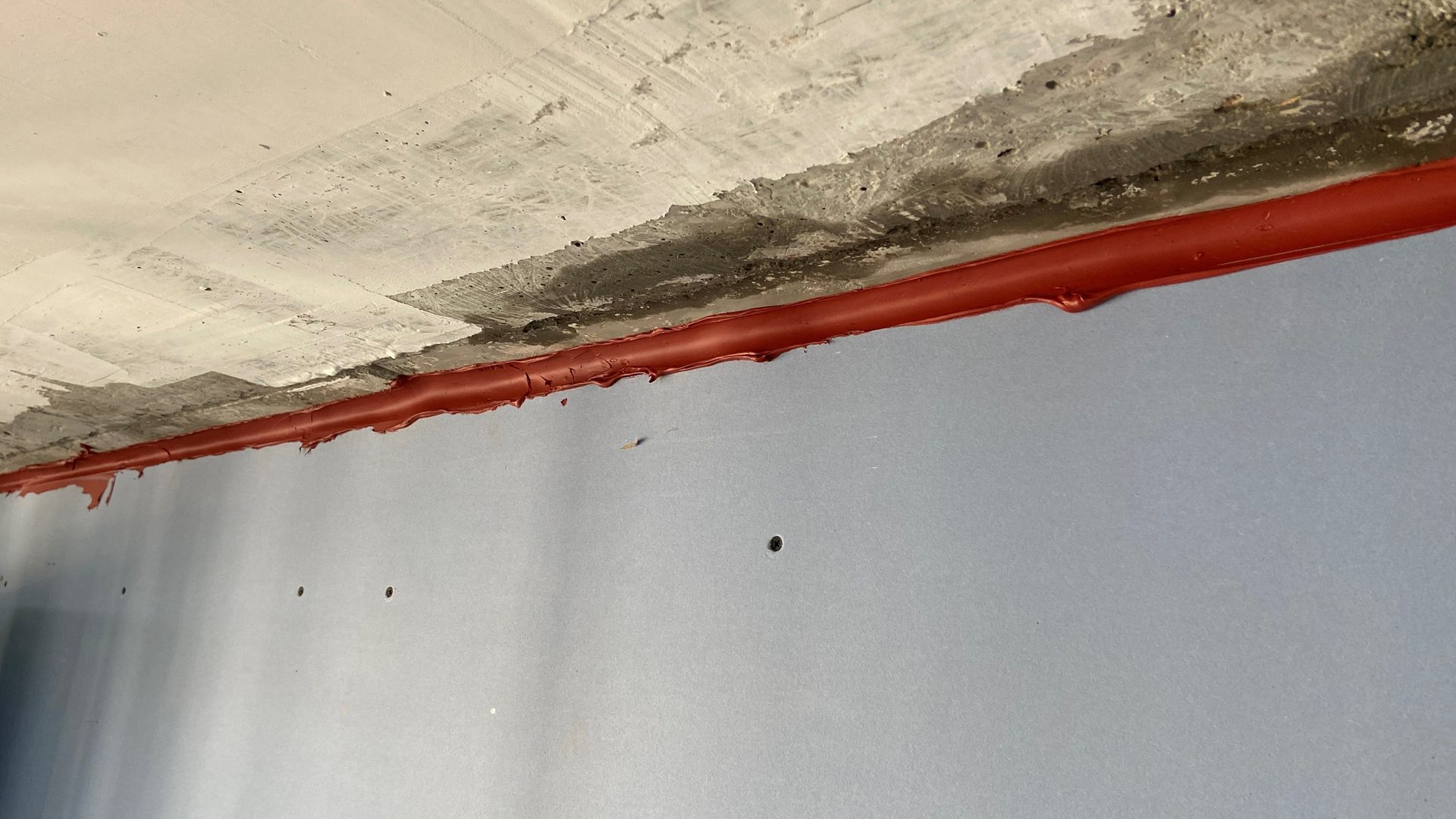
First-generation firestopping sealants applied to the top-of-wall. Photo courtesy of Jobsite Photos.
Pre-formed firestop products are not installed in a wet state, as is the case with sealants and fire sprays. They install fully cured, allowing the inspection process to begin immediately after installation.
The initial product offerings of pre-formed firestop were very simplistic, with some variation of intumescent fill material - strips, foam, or infused sheets. These intumescent products significantly reduced labor costs, which contractors and architects appreciated.
A faster installation that saves labor costs is always a welcomed feature, and because of that, firestop manufacturers nationwide now offer various versions of pre-formed firestop.
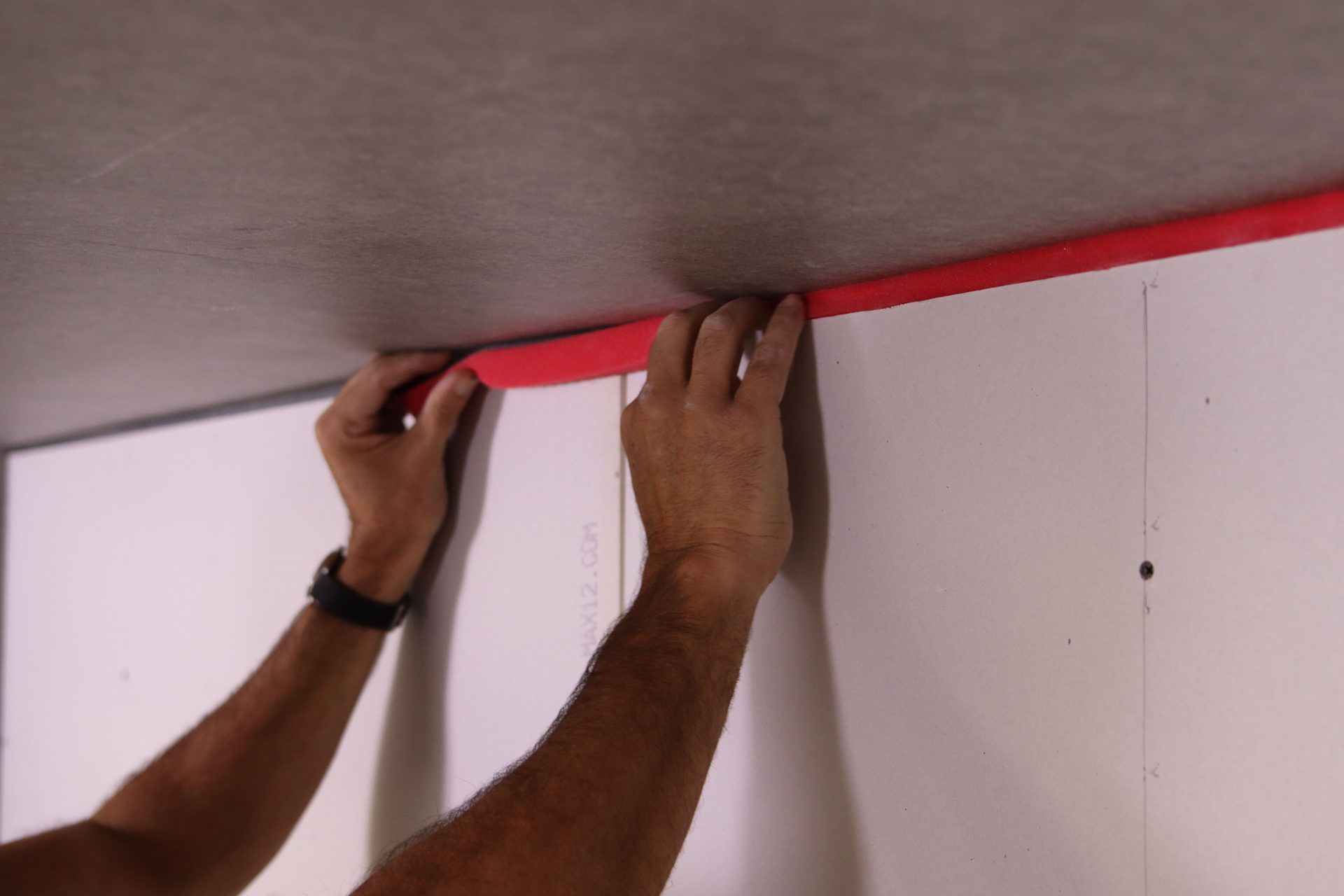
HOTROD TYPE-X is an example of an intumescent foam. Photo courtesy of CEMCO.
Pre-formed firestop checked a lot of boxes:
- Faster install
- Unlimited product shelf-life
- Improved project scheduling
- Provides up to five times greater movement than encumbered sealant joint systems
- Does not shrink, harden, or crack over time
- Allows for immediate inspections
However, there are some boxes that this type of pre-formed firestop does not check. Because this type of pre-formed firestop is mainly made up of intumescent material, it is often not intended to be left exposed in highly visible areas. Some of these products have brand names printed on the surface, while others have a foil or transparent poly layer over the intumescent for protection and thus are not ideal surfaces for finish paint to be applied.
This can create a problem since all pre-formed firestopping must be recognizable to the inspector, after all, it is a life-safety product. And the easier it is to identify, the easier it is to inspect.
The question is, “Can we improve the architectural design and aesthetics without compromising life-safety requirements?” On the surface, it seems like a tall order to find a firestopping product that is both highly recognizable for inspection and visually pleasing. Fortunately for the building industry, manufacturers are constantly innovating to keep up with architects’ needs and the requirements of the building code.
This pursuit leads to developing “high-performance firestop” that is aesthetically pleasing and complies with the strictest building code requirements.
How Does it Work?
For any pre-formed firestop product to qualify as “high performance,” it must meet the following requirements:
- It must install three to four times faster than traditional methods
- It must remain permanently flexible to maintain STC ratings
- It must be recognizable during construction and concealed within the finishes
- It must be paintable
- It must provide all ranges of deflection movement from 1/4 to 4 inch
- It must be third-party fire-tested and sound tested
- It must provide an L-Rating (smoke rating)
- It must be able to provide long-term performance warranties
- It must be highly durable to prevent damage to other trades
There are fire and sound gaskets that fall into the high-performance category. These products offer a permanently flexible bubble gasket to seal against uneven concrete. They are color-coded for easy recognition and have a highly durable vinyl outer profile that is paint ready and easily concealed with the surrounding finishes.
Blue for smoke and sound only. Courtesy of CEMCO
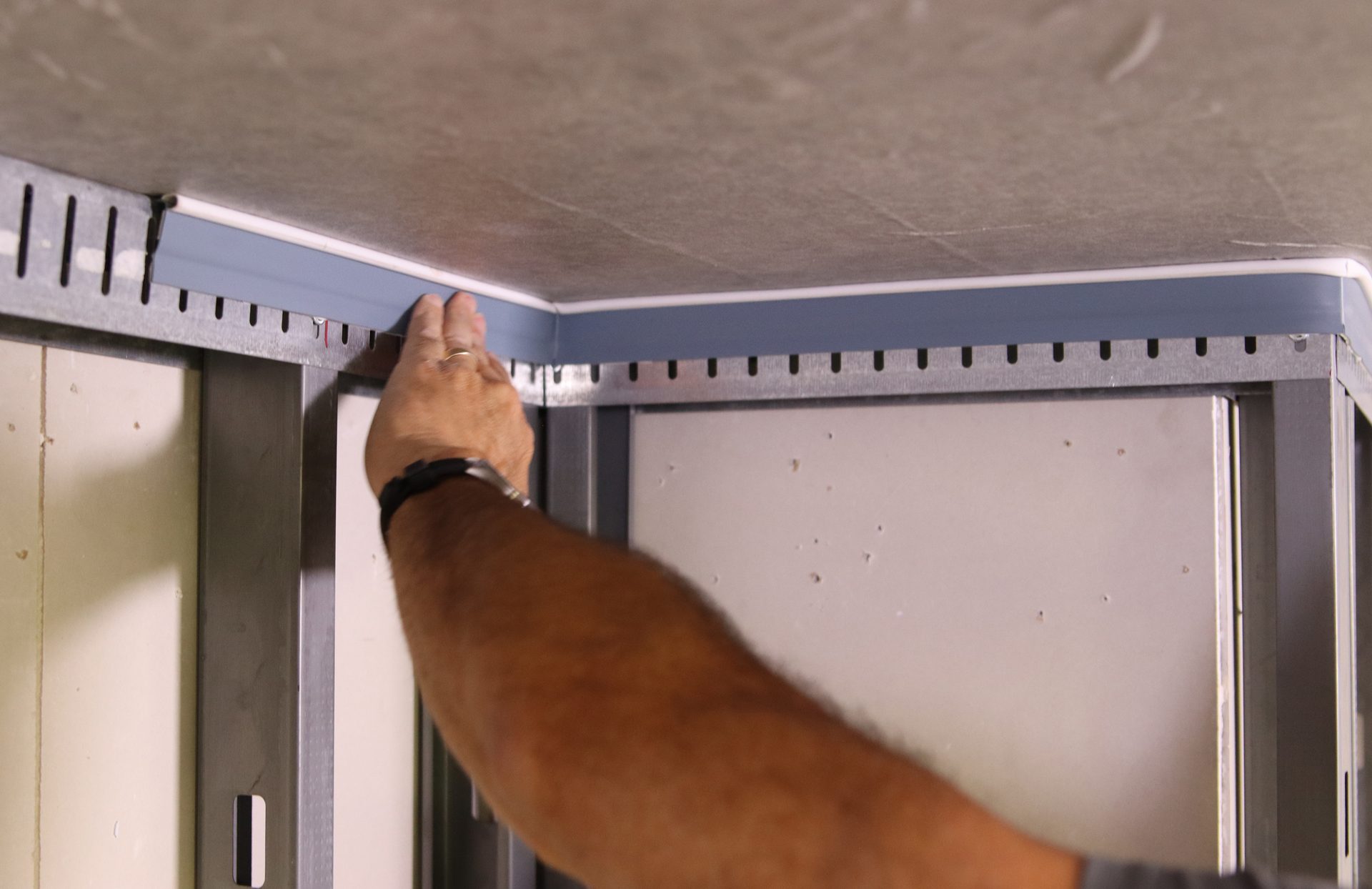
Pink for fire, smoke and sound ratings. Courtesy of CEMCO
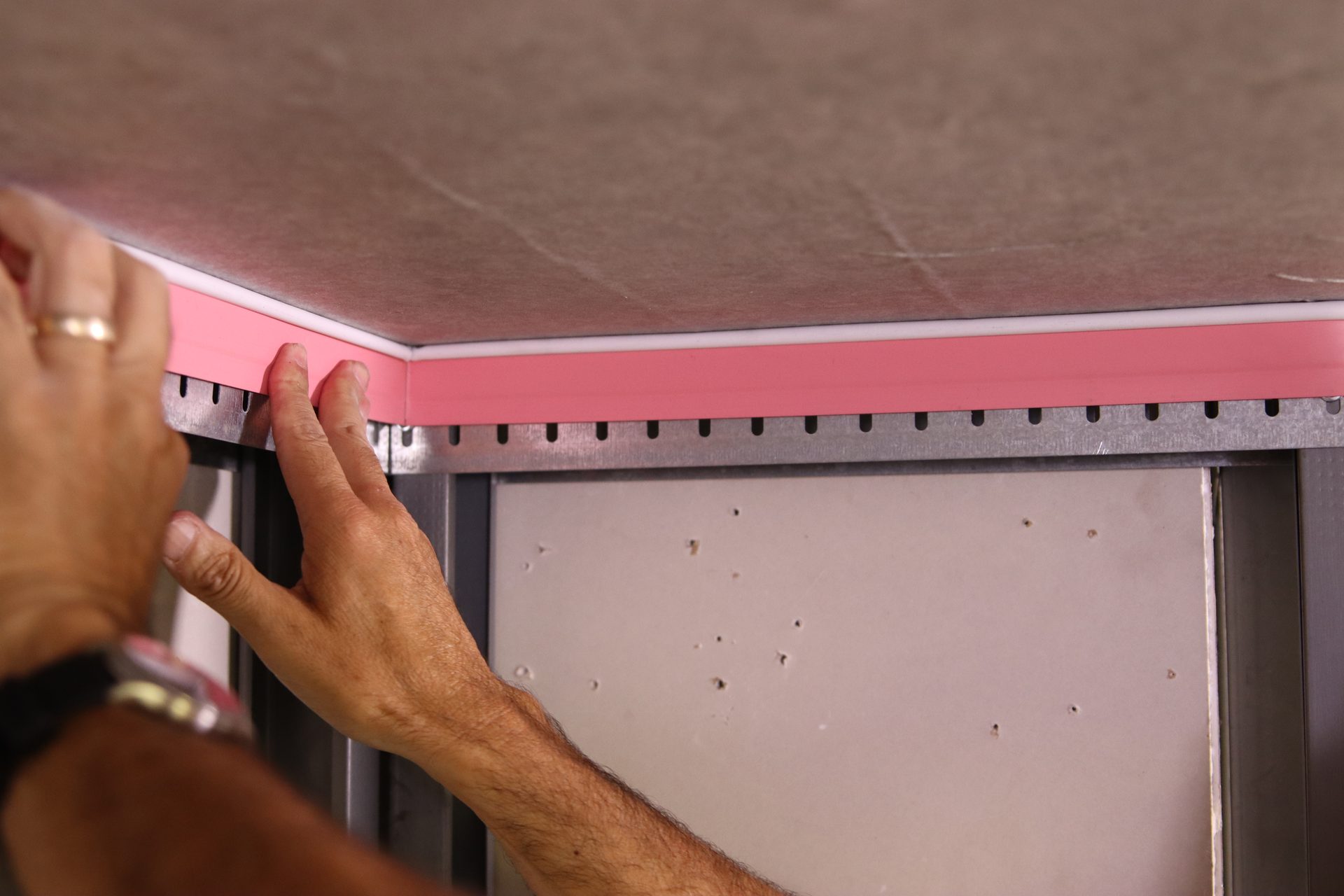
Once the drywall goes over the black fire gasket, it creates a recessed shadow reveal. Courtesy of CEMCO
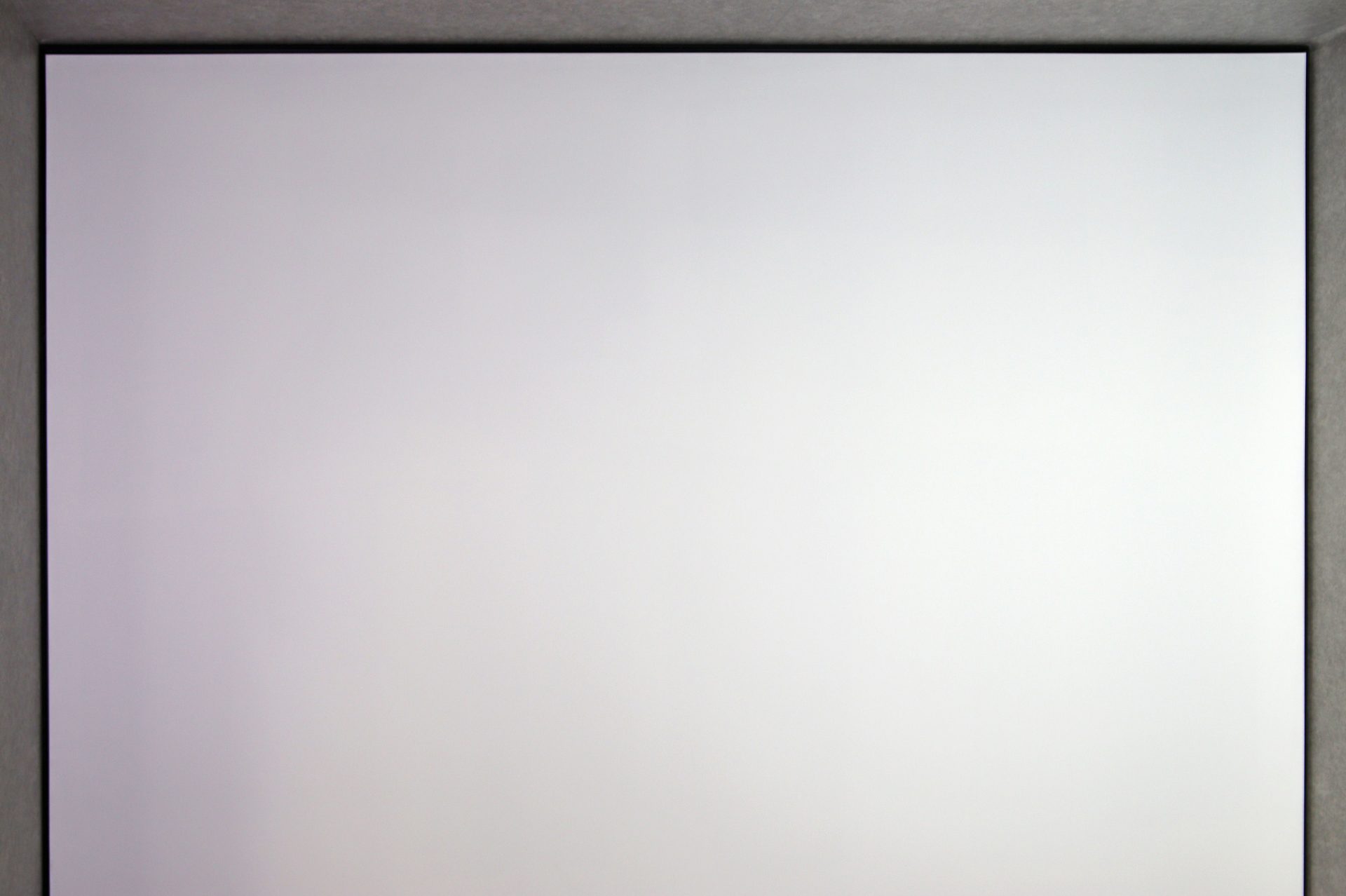
Black for exposed areas that require fire, smoke and sound rating. Courtesy of CEMCO

There are also fire-rated drywall accessories that fall into the high-performance firestop category. These products combine flexible vinyl drywall accessories with intumescent strips, thus allowing the firestopping to be installed within the drywall accessory. It’s hard to fully equate the labor savings on a product like this when you remove the step of installing a firestop altogether.
These products are also color coded for easy recognition. They feature a pink perforated mud leg that is highly recognizable as a fire-rated drywall accessory. Once the joint compound is installed, the pink perforated leg is concealed under the finish coat.

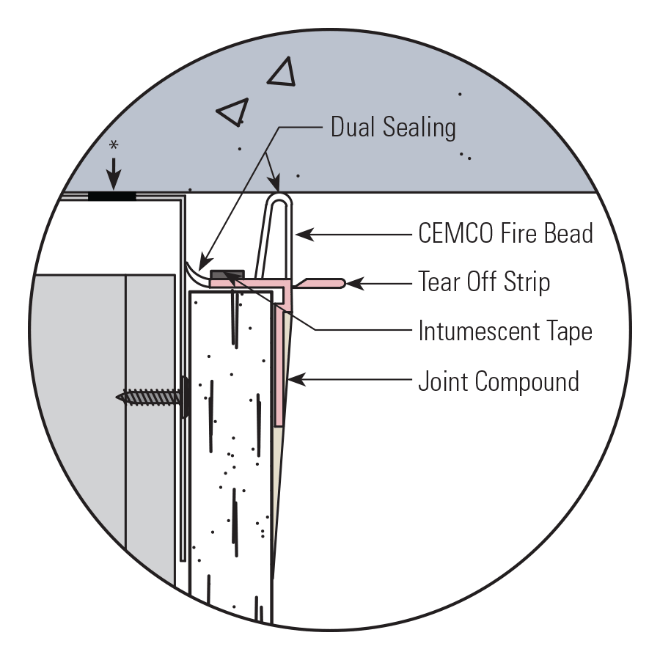
Courtesy of CEMCO
Courtesy of CEMCO
Fire bead installed with staples. Courtesy of Trim-Tex
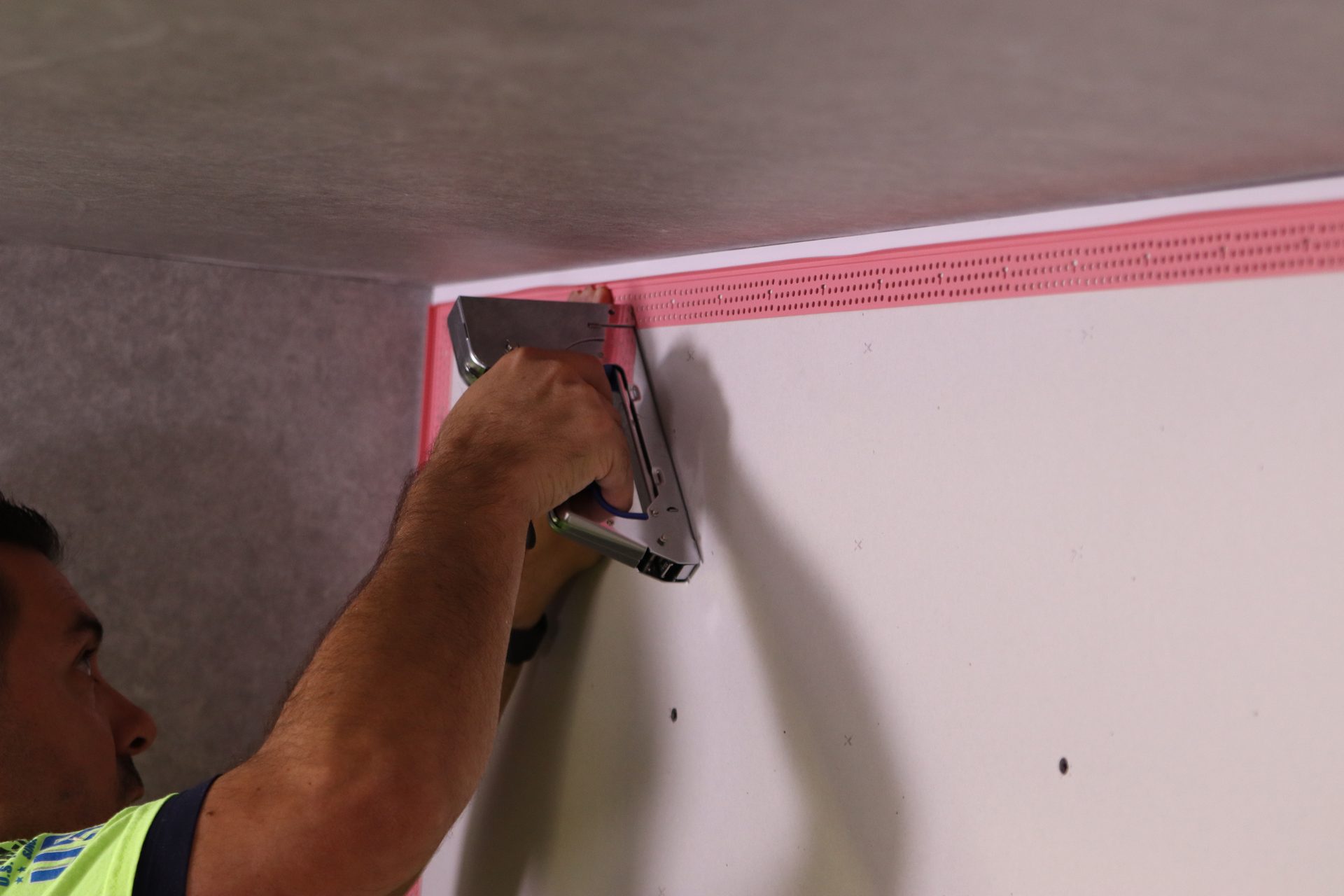
Trim-Tex Fire Bead installation. Courtesy of Trim-Tex

It is widely known that pre-formed firestop devices will replace field-applied fire sealant. Did you know that it can also take the place of drywall in some fire-rated wall assemblies? Take, for instance, a flush baseboard assembly (aka modern baseboard, as shown in detail below). This assembly requires an entire layer of drywall to be installed first to maintain the fire rating, and the outer layer can then be cut short to allow the wood baseboard to appear flush with the drywall.
CEMCO RBR Strap takes the place of drywall per BW-S-0036

Traditional Method requires an extra layer of drywall for one-hour wall assembly. Photo courtesy of CEMCO.
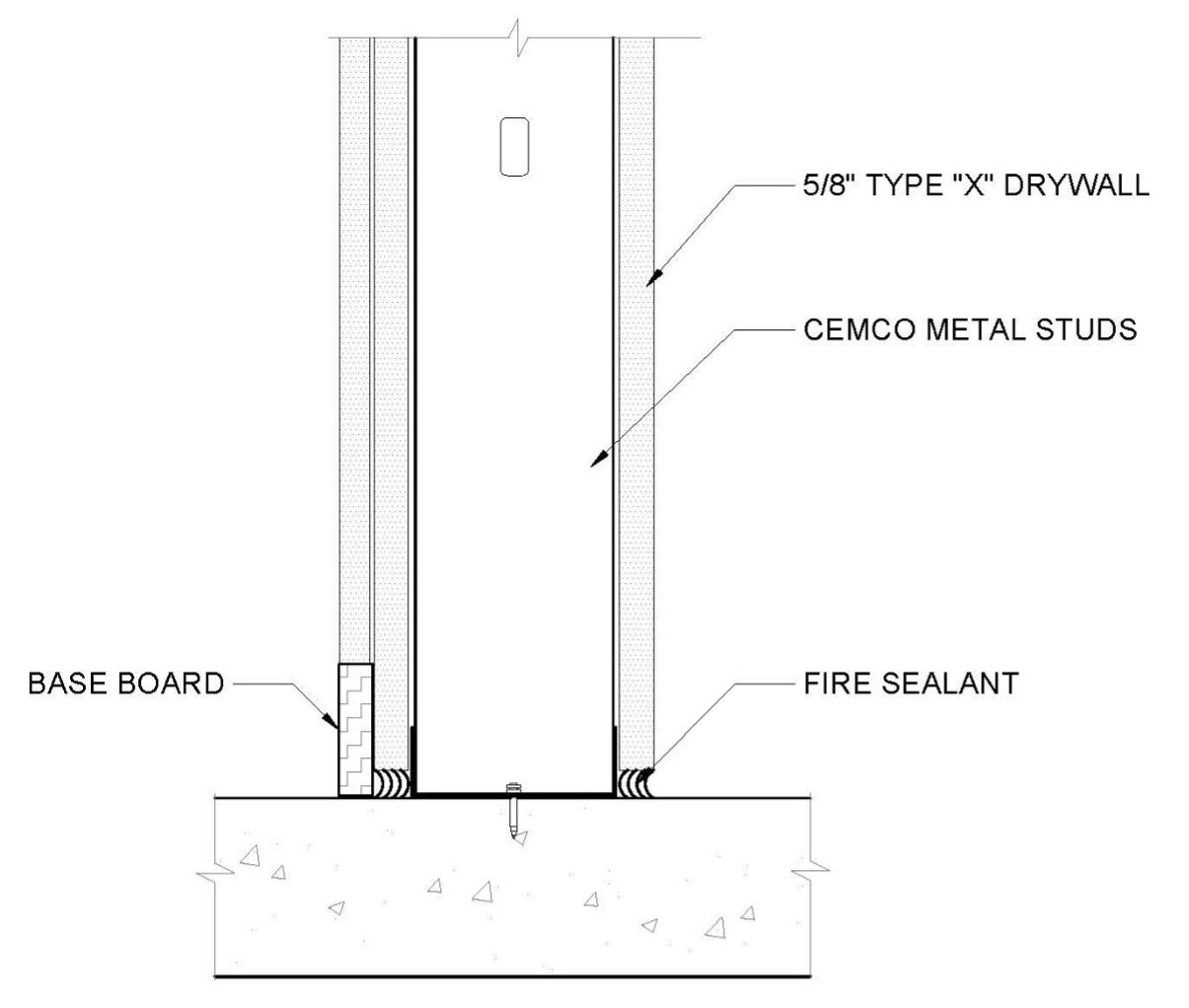
However, using a pre-formed firestop device such as a composite intumescent steel strap will allow the builder to eliminate an entire layer of drywall. As shown in detail below, the composite intumescent strip takes the place of the drywall and completes the fire rating as identified in BW-S-0036.
In closing: All forms of firestop identified in this article are available nationwide, functional, and code compliant. The building designer no longer needs to sacrifice aesthetic considerations in order to prioritize fire, sound, and movement capabilities of perimeter joints with the wide range of preformed firestop products available today. The main takeaway from this article is to bring awareness to various firestopping options and to inform the reader of the benefits of each type of firestopping.
Opening Image Courtesy of CEMCO unless otherwise noted.
Don Pilz is a senior manager of product development at CEMCO. He’s invented multiple firestop products distributed in the U.S. and abroad. Pilz ensures that all CEMCO’s firestopping products meet safety standards and stays current with changing regulations. Pilz also assists as a technical consultant with Trim-Tex, helping contractors get the most from their products. He strives to ensure that customers receive the highest quality craftsmanship and installation methods. Pilz can be contacted at donald.pilz@outlook.com.
